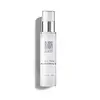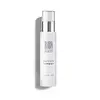What's inside
What's inside
 Key Ingredients
Key Ingredients

 Benefits
Benefits

 Concerns
Concerns

No concerns
 Ingredients Side-by-side
Ingredients Side-by-side

Water
Skin ConditioningGlycerin
HumectantGlycine Soja Extract
Skin ConditioningSodium PCA
HumectantProline
Skin ConditioningCarbomer
Emulsion StabilisingPanthenol
Skin ConditioningAspartic Acid
MaskingGlycine
BufferingSodium Lactate
BufferingHyaluronic Acid
HumectantNiacinamide
SmoothingCalcium Pantothenate
Sodium Ascorbyl Phosphate
AntioxidantTocopheryl Acetate
AntioxidantPyridoxine Hcl
Skin ConditioningAlanine
MaskingLysine
Skin ConditioningXanthan Gum
EmulsifyingMannitol
HumectantValine
MaskingHistidine
HumectantIsoleucine
Skin ConditioningMaltodextrin
AbsorbentPhenoxyethanol
PreservativePotassium Sorbate
PreservativeWater, Glycerin, Glycine Soja Extract, Sodium PCA, Proline, Carbomer, Panthenol, Aspartic Acid, Glycine, Sodium Lactate, Hyaluronic Acid, Niacinamide, Calcium Pantothenate, Sodium Ascorbyl Phosphate, Tocopheryl Acetate, Pyridoxine Hcl, Alanine, Lysine, Xanthan Gum, Mannitol, Valine, Histidine, Isoleucine, Maltodextrin, Phenoxyethanol, Potassium Sorbate
Water
Skin ConditioningPropanediol
SolventStearyl Alcohol
EmollientCarthamus Tinctorius Seed Oil
MaskingCeteareth-20
CleansingDecyl Oleate
EmollientGlycine Soja Germ Extract
EmollientVitis Vinifera Seed Oil
EmollientGlycerin
HumectantAnthemis Nobilis Flower Extract
MaskingCetearyl Alcohol
EmollientCamellia Sinensis Leaf Extract
AntimicrobialOenothera Biennis Oil
EmollientOlea Europaea Fruit Extract
BleachingSodium Hyaluronate
HumectantNiacin
SmoothingRice Amino Acids
Skin ConditioningGlycine
BufferingPanthenol
Skin ConditioningXanthan Gum
EmulsifyingGlycogen
HumectantSaccharomyces Cerevisiae Extract
Skin ConditioningTocopheryl Acetate
AntioxidantSalicylic Acid
MaskingBisabolol
MaskingPhenoxyethanol
PreservativePotassium Sorbate
PreservativeEthylhexylglycerin
Skin ConditioningCitrus Grandis Peel Oil
MaskingTetrasodium EDTA
Water, Propanediol, Stearyl Alcohol, Carthamus Tinctorius Seed Oil, Ceteareth-20, Decyl Oleate, Glycine Soja Germ Extract, Vitis Vinifera Seed Oil, Glycerin, Anthemis Nobilis Flower Extract, Cetearyl Alcohol, Camellia Sinensis Leaf Extract, Oenothera Biennis Oil, Olea Europaea Fruit Extract, Sodium Hyaluronate, Niacin, Rice Amino Acids, Glycine, Panthenol, Xanthan Gum, Glycogen, Saccharomyces Cerevisiae Extract, Tocopheryl Acetate, Salicylic Acid, Bisabolol, Phenoxyethanol, Potassium Sorbate, Ethylhexylglycerin, Citrus Grandis Peel Oil, Tetrasodium EDTA
Ingredients Explained
These ingredients are found in both products.
Ingredients higher up in an ingredient list are typically present in a larger amount.
Glycerin is already naturally found in your skin. It helps moisturize and protect your skin.
A study from 2016 found glycerin to be more effective as a humectant than AHAs and hyaluronic acid.
As a humectant, it helps the skin stay hydrated by pulling moisture to your skin. The low molecular weight of glycerin allows it to pull moisture into the deeper layers of your skin.
Hydrated skin improves your skin barrier; Your skin barrier helps protect against irritants and bacteria.
Glycerin has also been found to have antimicrobial and antiviral properties. Due to these properties, glycerin is often used in wound and burn treatments.
In cosmetics, glycerin is usually derived from plants such as soybean or palm. However, it can also be sourced from animals, such as tallow or animal fat.
This ingredient is organic, colorless, odorless, and non-toxic.
Glycerin is the name for this ingredient in American English. British English uses Glycerol/Glycerine.
Learn more about GlycerinThis ingredient is an amino acid that helps build proteins and moisturizes skin. It is already present in our skin as our bodies produce them naturally.
Glycine already plays a role in helping keep our skin moisturized as amino acids transport moisture throughout our skin.
As collagen is made up of glycine and other amino acids, it is believed glycine may help our skin produce more collagen.
Learn more about GlycinePanthenol is a common ingredient that helps hydrate and soothe the skin. It is found naturally in our skin and hair.
There are two forms of panthenol: D and L.
D-panthenol is also known as dexpanthenol. Most cosmetics use dexpanthenol or a mixture of D and L-panthenol.
Panthenol is famous due to its ability to go deeper into the skin's layers. Using this ingredient has numerous pros (and no cons):
Like hyaluronic acid, panthenol is a humectant. Humectants are able to bind and hold large amounts of water to keep skin hydrated.
This ingredient works well for wound healing. It works by increasing tissue in the wound and helps close open wounds.
Once oxidized, panthenol converts to pantothenic acid. Panthothenic acid is found in all living cells.
This ingredient is also referred to as pro-vitamin B5.
Learn more about PanthenolPhenoxyethanol is a preservative that has germicide, antimicrobial, and aromatic properties. Studies show that phenoxyethanol can prevent microbial growth. By itself, it has a scent that is similar to that of a rose.
It's often used in formulations along with Caprylyl Glycol to preserve the shelf life of products.
Potassium Sorbate is a preservative used to prevent yeast and mold in products. It is commonly found in both cosmetic and food products.
This ingredient comes from potassium salt derived from sorbic acid. Sorbic acid is a natural antibiotic and effective against fungus.
Both potassium sorbate and sorbic acid can be found in baked goods, cheeses, dried meats, dried fruit, ice cream, pickles, wine, yogurt, and more.
You'll often find this ingredient used with other preservatives.
Learn more about Potassium SorbateTocopheryl Acetate is AKA Vitamin E. It is an antioxidant and protects your skin from free radicals. Free radicals damage the skin by breaking down collagen.
One study found using Tocopheryl Acetate with Vitamin C decreased the number of sunburned cells.
Tocopheryl Acetate is commonly found in both skincare and dietary supplements.
Learn more about Tocopheryl AcetateWater. It's the most common cosmetic ingredient of all. You'll usually see it at the top of ingredient lists, meaning that it makes up the largest part of the product.
So why is it so popular? Water most often acts as a solvent - this means that it helps dissolve other ingredients into the formulation.
You'll also recognize water as that liquid we all need to stay alive. If you see this, drink a glass of water. Stay hydrated!
Learn more about WaterXanthan gum is used as a stabilizer and thickener within cosmetic products. It helps give products a sticky, thick feeling - preventing them from being too runny.
On the technical side of things, xanthan gum is a polysaccharide - a combination consisting of multiple sugar molecules bonded together.
Xanthan gum is a pretty common and great ingredient. It is a natural, non-toxic, non-irritating ingredient that is also commonly used in food products.
Learn more about Xanthan Gum